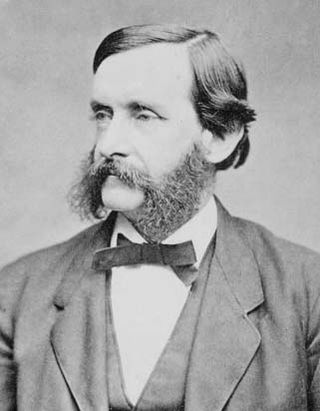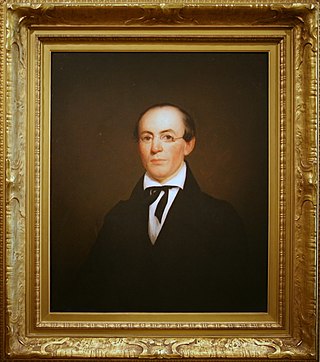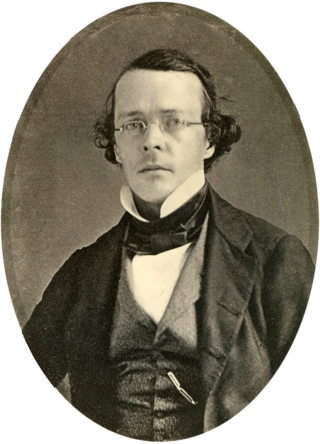
William Lloyd Garrison, who preferred to be called Lloyd and signed himself Wm. Lloyd, was a prominent American Christian, abolitionist, journalist, suffragist, and social reformer. He is best known for his widely read antislavery newspaper The Liberator, which he founded in 1831 and published in Boston until slavery in the United States was abolished by constitutional amendment in 1865. Garrison promoted "no-governmentism" and rejected the inherent validity of the American government on the basis that its engagement in war, imperialism, and slavery made it corrupt and tyrannical. He initially opposed violence as a principle and advocated for Christian nonresistance against evil; at the outbreak of the Civil War, he abandoned his previous principles and embraced the armed struggle and the Lincoln administration. He was one of the founders of the American Anti-Slavery Society and promoted immediate and uncompensated, as opposed to gradual and compensated, emancipation of slaves in the United States.
The source of Garrison's power was the Bible. From his earliest days, he read the Bible constantly and prayed constantly. It was with this fire that he started his conflagration. ... So also, a prejudice against all fixed forms of worship, against the authority of human government, against every binding of the spirit into conformity with human law, – all these things grew up in Garrison's mind out of his Bible reading.

The American Anti-Slavery Society was an abolitionist society founded by William Lloyd Garrison and Arthur Tappan. Frederick Douglass, an escaped slave, had become a prominent abolitionist and was a key leader of this society, who often spoke at its meetings. William Wells Brown, also a freedman, also often spoke at meetings. By 1838, the society had 1,350 local chapters with around 250,000 members.

Theodore Dwight Weld was one of the architects of the American abolitionist movement during its formative years from 1830 to 1844, playing a role as writer, editor, speaker, and organizer. He is best known for his co-authorship of the authoritative compendium American Slavery As It Is: Testimony of a Thousand Witnesses, published in 1839. Harriet Beecher Stowe partly based Uncle Tom’s Cabin on Weld's text; the latter is regarded as second only to the former in its influence on the antislavery movement. Weld remained dedicated to the abolitionist movement until slavery was ended by the Thirteenth Amendment to the United States Constitution in 1865.

Lydia Maria Child was an American abolitionist, women's rights activist, Native American rights activist, novelist, journalist, and opponent of American expansionism.

The Liberator (1831–1865) was a weekly abolitionist newspaper, printed and published in Boston by William Lloyd Garrison and, through 1839, by Isaac Knapp. Religious rather than political, it appealed to the moral conscience of its readers, urging them to demand immediate freeing of the slaves ("immediatism"). It also promoted women's rights, an issue that split the American abolitionist movement. Despite its modest circulation of 3,000, it had prominent and influential readers, including Frederick Douglass, Beriah Green and Alfred Niger. It frequently printed or reprinted letters, reports, sermons, and news stories relating to American slavery, becoming a sort of community bulletin board for the new abolitionist movement that Garrison helped foster.

Thomas Wentworth Higginson was an American Unitarian minister, author, abolitionist, politician, and soldier. He was active in the American Abolitionism movement during the 1840s and 1850s, identifying himself with disunion and militant abolitionism. He was a member of the Secret Six who supported John Brown. During the Civil War, he served as colonel of the 1st South Carolina Volunteers, the first federally authorized black regiment, from 1862 to 1864. Following the war, he wrote about his experiences with African American soldiers and devoted much of the rest of his life to fighting for the rights of freed people, women, and other disfranchised peoples.

Charles Gordon Atherton was an American politician and lawyer from New Hampshire. He was elected to the United States House of Representatives from 1837 to 1843. He was elected to the United States Senate from 1843 to 1849 and then again in 1853. He was a Democrat.
The first Anti-Slavery Convention of American Women was held in New York City on May 9–12, 1837 to discuss the American abolition movement. This gathering represented the first time that women from such a broad geographic area met with the common purpose of promoting the anti-slavery cause among women, and it also was likely the first major convention where women discussed women's rights. Some prominent women went on to be vocal members of the Women's Suffrage Movement, including Lucretia Mott, the Grimké sisters, and Lydia Maria Child. After the first convention in 1837, there were also conventions in 1838 and 1839

The Massachusetts Anti-Slavery Society, headquartered in Boston, was organized as an auxiliary of the American Anti-Slavery Society in 1835. Its roots were in the New England Anti-Slavery Society, organized by William Lloyd Garrison, editor of The Liberator, in 1831, after the defeat of a proposal for a college for blacks in New Haven.

Edmond Quincy V (1808–1877) was an American author and reformer.
David Lee Child was an American journalist, best known for the independence of his character, and the boldness with which he denounced social wrongs and abuses. He worked closely with his wife, Lydia Maria Child.

The Boston Female Anti-Slavery Society (1833–1840) was an abolitionist, interracial organization in Boston, Massachusetts, in the mid-19th century. "During its brief history ... it orchestrated three national women's conventions, organized a multistate petition campaign, sued southerners who brought slaves into Boston, and sponsored elaborate, profitable fundraisers."

Francis Jackson (1789–1861) was an abolitionist in Boston, Massachusetts. He was president of the Massachusetts Anti-Slavery Society for many years, was also president of the New England Anti-Slavery Conventions, and vice president of the American Anti-Slavery Society. He was also affiliated with the Boston Female Anti-Slavery Society and the Boston Vigilance Committee. He worked for the South Cove Corporation, filling in land in Boston's South End in the 1830s.
Thomas Treadwell Stone was an American Unitarian pastor, abolitionist, and Transcendentalist.

Isaac Knapp was an American abolitionist printer, publisher, and bookseller in Boston, Massachusetts. He is remembered primarily for his collaboration with William Lloyd Garrison in printing and publishing The Liberator newspaper.
The Fall River Female Anti-Slavery Society was an abolitionist group in Fall River, Massachusetts, formed in 1835. It was the second female anti-slavery society in the city. One of its founding members was Elizabeth Buffum Chace (1806-1899).
Anti-Slavery Society may refer to:
The Concord Female Anti-Slavery Society was a female abolitionist organisation in Concord, Massachusetts, in the mid 19th century. This society was a significant influence on Henry David Thoreau, Ralph Waldo Emerson, and Louisa May Alcott.













